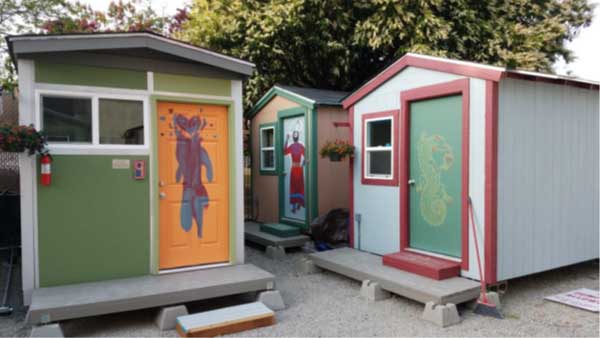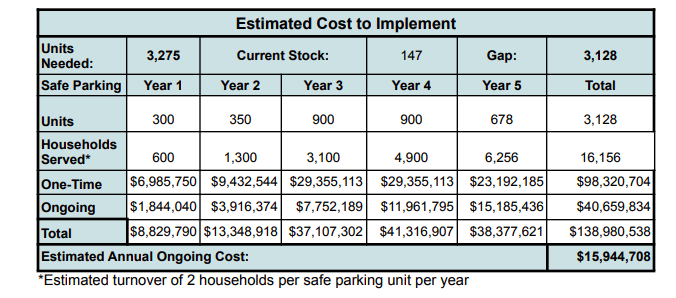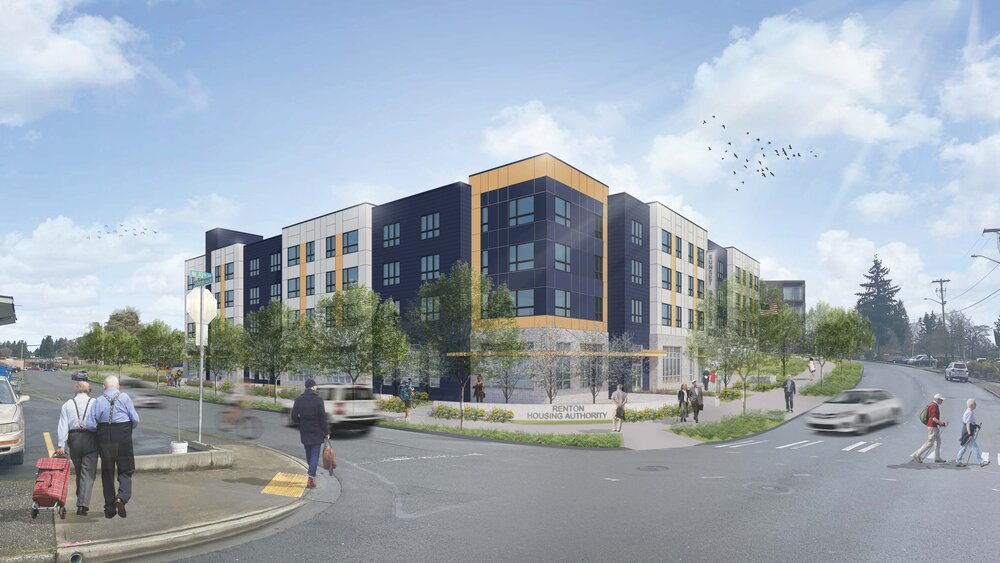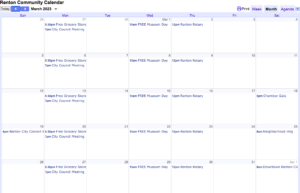
Photo Courtesy City of Seattle. Even after $25 billion is spent on homelessness in King County, the plan is that some residents will still be living in tiny houses, safe RV parking, and safe vehicle parks. Permanent housing will cost extra.
There’s been a lot of media and public commentary on the King County Regional Homelessness Authority’s (KCRHA) proposed 5-year plan, currently out for public comment. The main reaction has been shock and dismay at the high price tag. It runs roughly around 8 billion in capital costs and 17 billion in 5-year operating costs.
But one aspect of this plan is still not widely known, and deserves explanation. The KCRHA plan is a $25 Billion dollar 5-year plan to provide “Temporary Housing.” Permanent housing for the 23,000 homeless covered by the plan is still up to Cities, Counties, and local housing authorities. You read that right: when the $25 billion dollar plan is fully implemented, people will still be living in a conglomeration of shelters, safe vehicle parking spots, tiny houses, skilled nursing facilities, converted hotels, supportive apartments, and emergency shelters. Once individuals are healthy and independent enough to safely move to a proper long-term home, that will cost extra. Per item 2 on page 26 of the plan, “…responsibility for permanent housing capital financing and development remains with the federal, state, King County, and city/local jurisdictions..”

Five-year plan, page 36: Safe parking is a $139 Million dollar expense over five years; occupants will not be permanently housed by the $25 billion dollar plan.
Permanent housing for 23,000 people, if built all-new with taxpayer funds, would cost another 10-20 billion dollars, or more.
So the total plan as envisioned by the KCRHA is actually closer to 45 billion over five years, with still more money needed (maybe another $3 billion per year) for ongoing operational expenses for the permanent housing.
We all want to resolve the homeless crisis, but coming up with $45 billion in five years is completely beyond the capability of working taxpayers in our County. Households are already straining under the three-county $59 billion Sound Transit Phase 3 program, and that’s a 25-year expenditure– homelessness can’t wait 25 years. Furthermore, the high property taxes that came from Sound Transit 3 and other recent tax measures are adding to our high costs of housing, hence worsening homelessness. A $45 billion dollar 5-year measure would no doubt put thousands more on the street.
I don’t mean to sound like I’m against everything that KCRHA has proposed. They’ve acknowledged the need for rehab centers and skilled nursing facilities to get people through medical and behavioral crisis, and I strongly support these objectives, as long as we are confident the facilities will be efficiently run and produce positive results.

Sunset Gardens, being built in Renton by Renton Housing Authority(RHA), will soon provide long-term permanent housing for 76 families that would otherwise be unsheltered. These units will be additive to the approximately 1000 units currently managed by RHA.
But the overall plan is too expensive, and does not need to be that way. Over the coming weeks I’ll discuss ways we can dramatically lower the cost, and have far more near-term success for our families in need. I’ll share this one teaser: a big part of this efficiency will come from helping struggling families hold on to housing they currently have or move directly to new permanent housing, bypassing the KCRHA homeless jurisdiction entirely, through well-planned projects like the Renton Housing Authority project shown above. Please keep checking back for further blog entries on this topic.
As always, I would appreciate your ideas and feedback in the comment section below.




I can’t believe I’m reading this. That amount of money could buy thousands and thousands of condominiums. There’s got to be some graft involved when you have such a stupid proposal.
Dear “Wtf”, and the money could go even further helping people through short-term challenges, like the Single Mom whose car was stolen that I recently wrote about, so that they don’t ever run the risk of falling into the ranks of homelessness to begin with. I’ll be writing an article or two with ideas that would really help, including highly-efficient programs that are way underfunded, and I’ll be looking for the community’s ideas as well. Please watch for it and share your own ideas when I publish it.
Renton supplied steering wheel locks for Hyundai and Kia owners would have a great return on investment. Saving police time.
How not to spend money and coming soon to Renton! Yay!
SB 5536 established Health Engagement Hubs:
“Health Engagement Hubs will offer opioid treatment options for individuals struggling with addiction. These Hubs may take the form of mobile or standalone structures and are required to provide harm reduction services and supplies. The supplies distributed may include clean syringes, crack pipes, and other smoking equipment, such as steel wool and rubber bands. Some Heath Engagement Hubs will provide authorized alternatives to street drugs.
Importantly, these Hubs are required by law to be accessible to both youth and adults. This provision ensures that minors are not excluded from accessing critical support and resources for their addiction.
Authorization by the parent/guardian will not be required or asked.”
Crack pipes for kids! How sweet!